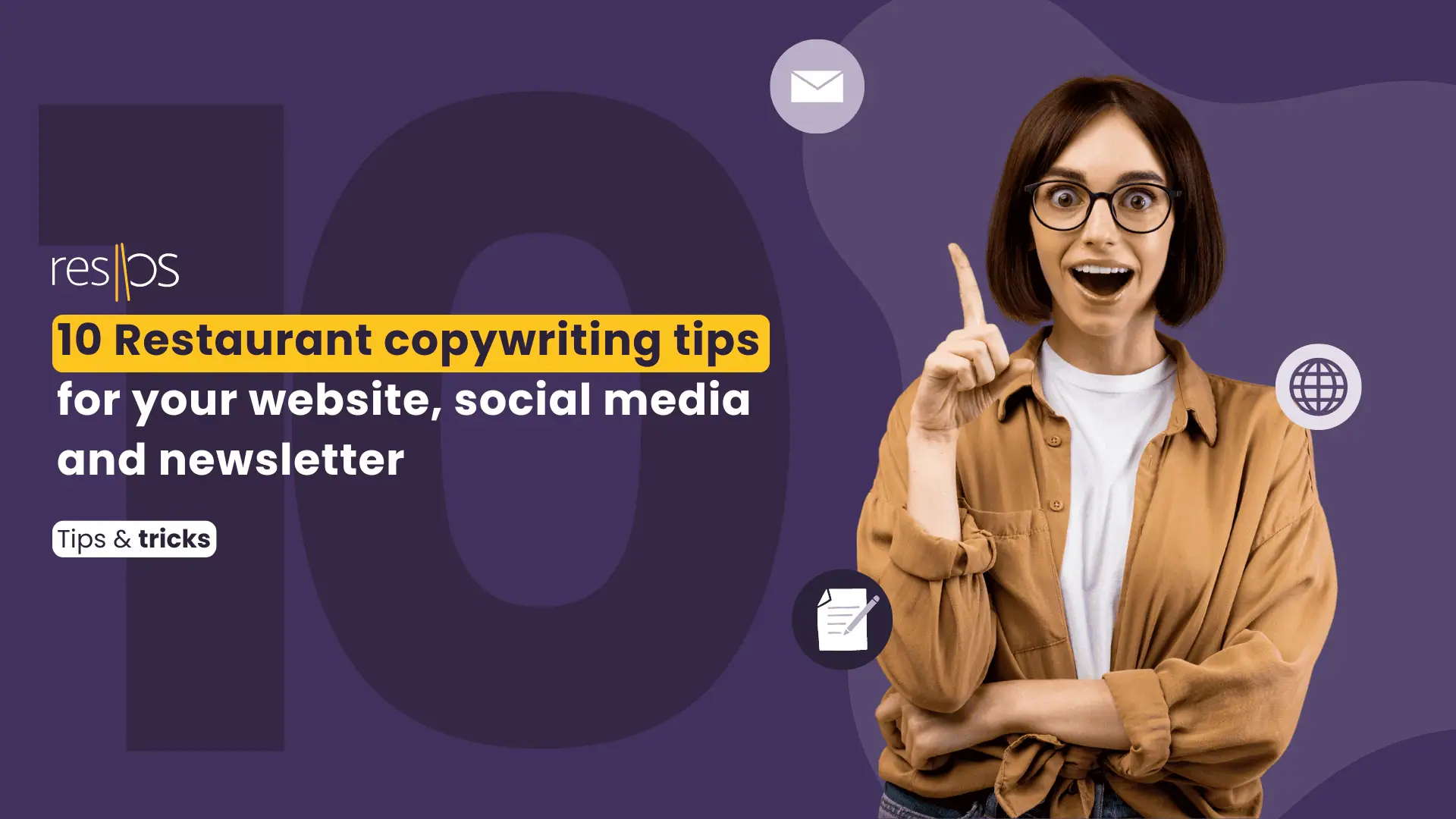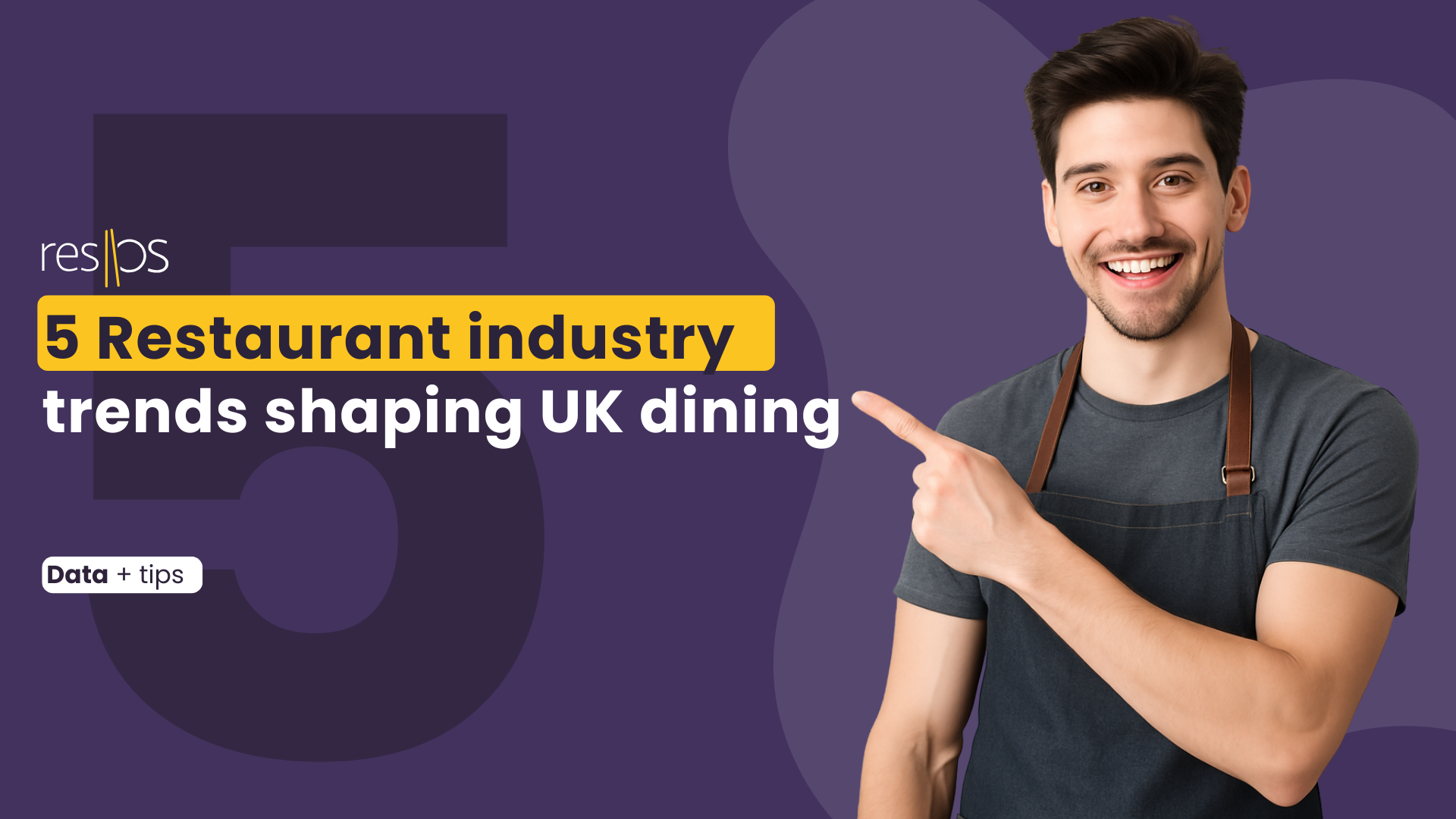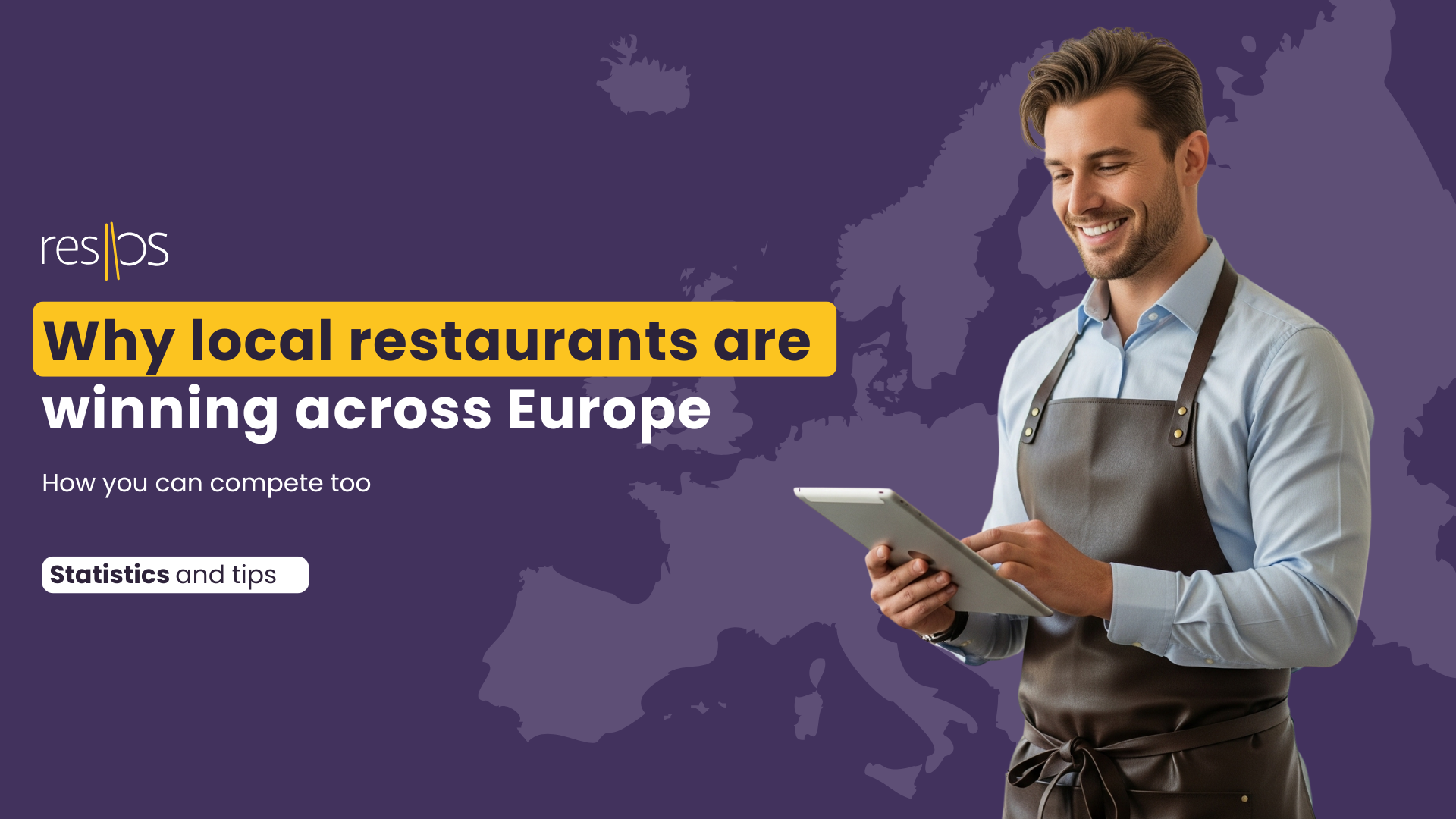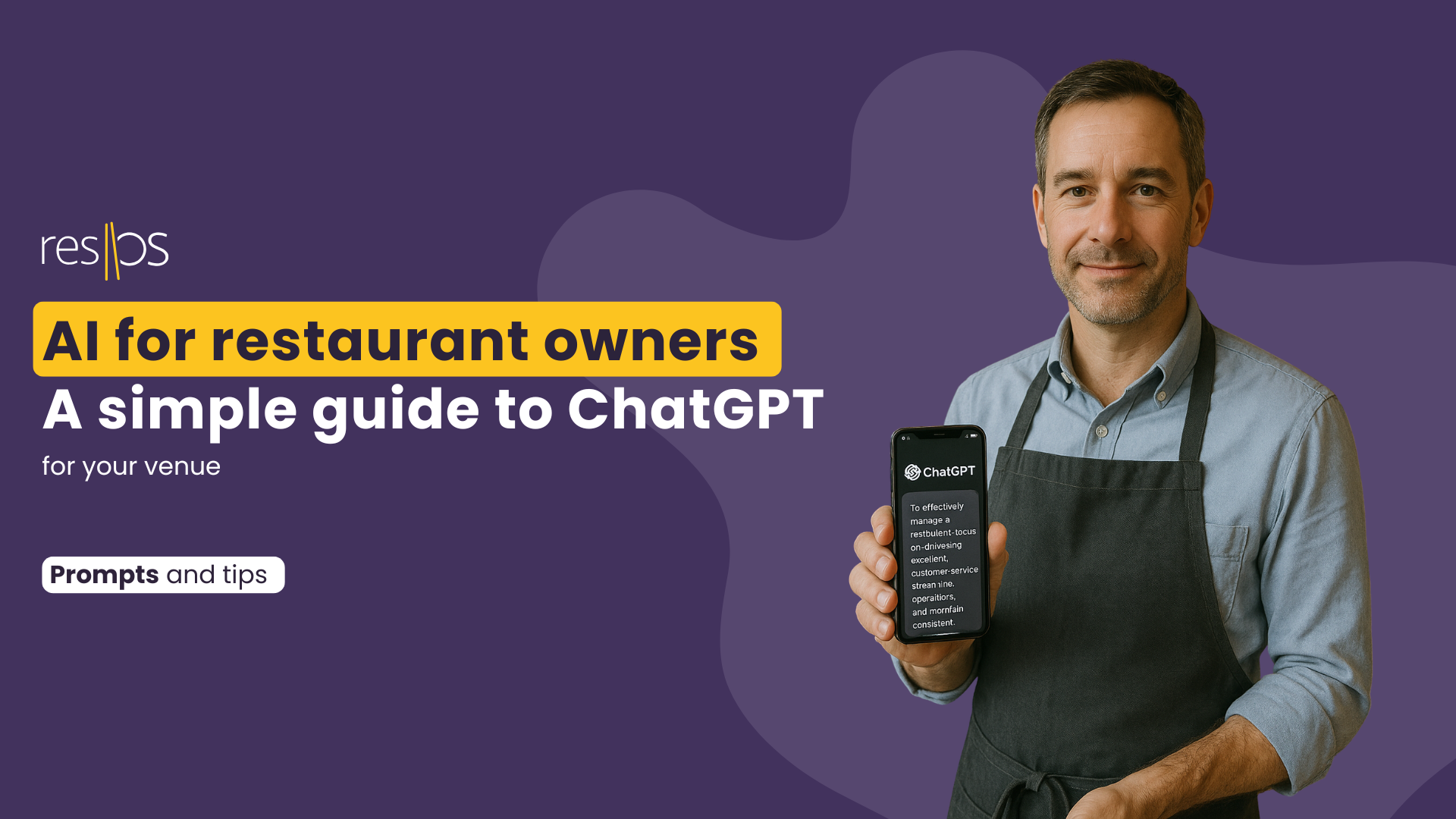We know you’re passionate about serving up delicious dishes and creating unforgettable experiences for your guests. But have you thought about how powerful your words can be in attracting even more customers?
Reels of your restaurant, photos of your specialities and stories with your staff can transform any curious passer-by into an online reservation and loyal customer.
❔What can you write in those captions?
❔How should you write it?
❔How can you make the most out of your restaurant’s social media, website, and email marketing communication?
We’ll help you out. Read on for more about how copywriting — can help your restaurant sell more.
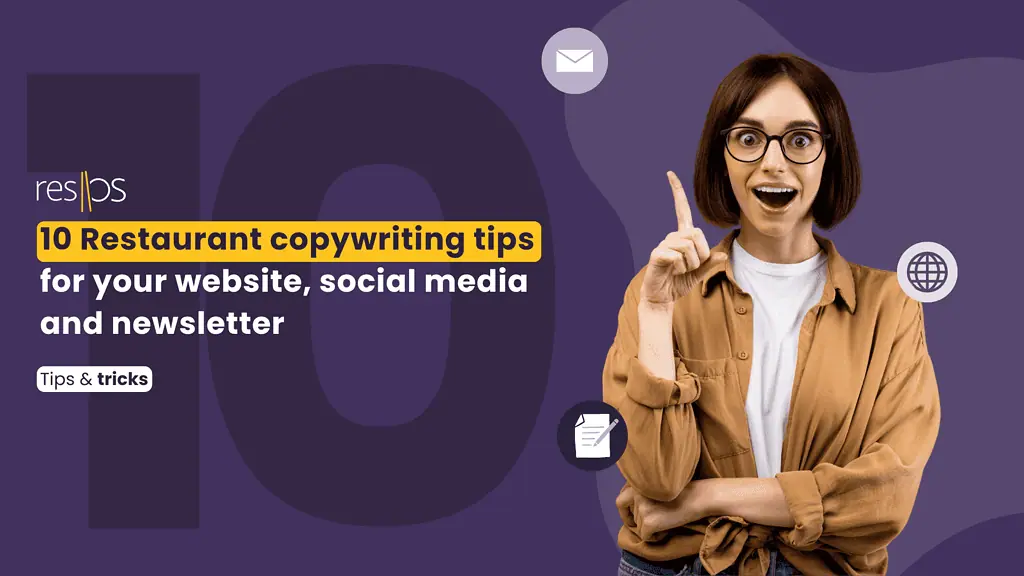
What is restaurant copywriting?
Great, you want to know more about talking effectively with your customers! Let’s start by going over “copy”, the word you might hear being thrown around.
You’re using it already, even if you don’t know it!
“Copy” is really anything that you write with an objective in mind: you want others to do something. That can be:
- Book an online reservation
- Comment
- Subscribe to your newsletter
- Follow for more
- Visit your website
- Placing their order 😅
So, when you write in a post: “Our latest menu is out! What do you think of it? Comment down below!”, you’re using copywriting. Congrats! 👏
Tips for restaurant copywriting
Now that we know what copywriting is, let’s go through some tips and techniques you can use today:
1. Highlight what makes you special
2. Sell the experience, not just the food
3. Use descriptive language
4. Your customer is more important than you
5. Keep it concise and clear
6. Tell stories
7. Use the active voice
8. Don’t forget strong calls to action
9. Be consistent
10. Don’t underestimate SEO
1. Highlight what makes you special
Are your ingredients organically-sourced? Has that family recipe been passed down from generation to generation? Do you serve gluten-free food alone?
Your unique selling point should be all over your copy. Your guests need to know why they should choose you over your competition down the street. Don’t be shy about it and tell them!
2. Sell the experience, not just the food
If your customers only wanted your food, they would just order it from the comfort of their homes.
Your restaurant offers much more than just the food. The experience also matters, sometimes even more than the food itself. What are you selling rather than the food?
- A friendly face
- A romantic place for couples
- A busy night out with friends
- Lazy weekend brunches
This ties in with the next tip.
Take Erimitis Restaurant, one of our clients, as an example. They are not only selling food but also the remarkable ocean view as part of the experience.
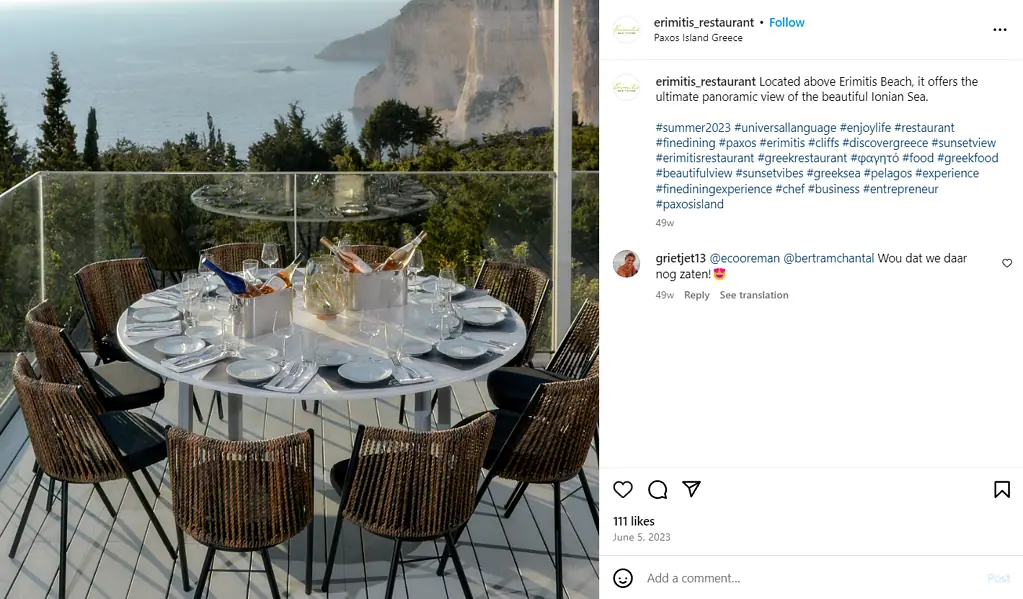
3. Use descriptive language
Adjectives are your best friends.
There are your customers scrolling through their phone. Suddenly they see you talk about your tender grilled steak served with caramelized onions and steamy broccoli salad. Are you drooling yet? They will too.
A picture may be worth a thousand words, but don’t underestimate its power.
List possible words and phrases that convey your offer, your unique selling point and your experience. Brainstorm with your team or with the help of AI 😉
Whenever you need to write a new post, a new website section or your next newsletter, you’ll have a handy set of words at your disposal.
4. Your customer is more important than you
This simple trick will turn your restaurant into a caring friend. Instead of using “I” (or “we”) in a sentence, reword it to “you”.
💡 Example:
We care about our customers, which is why we only pick out organically-sourced ingredients. Here, you’ll only find organically-sourced ingredients, picked out with you in mind. Which one captures your attention the most? We hope you answered the second one…
Look at your restaurant’s copy and turn it upside down.
A cheat sheet to help you out:
| I / We | 👉 | You |
| My / Our | 👉 | Your |
| Mine / Ours | 👉 | Yours |
5. Keep it concise and clear
No one reads much these days, especially when it comes to choosing a restaurant. Use this knowledge to your advantage and get to the point fast.
As a rule of thumb, structure your content in an inverted pyramid. The important information comes right at the top, trickling down until you reach the bottom, where the least important info lies. This doesn’t mean that you’ll only write 3-word-sentences at a time, but it does mean that less is more.
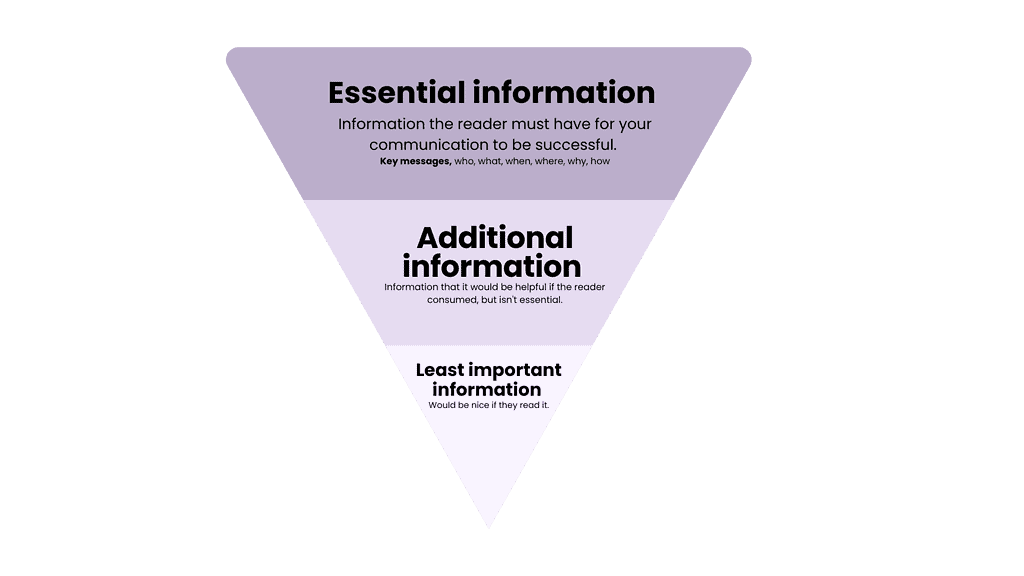
6. Tell stories
Stories are a powerful device to keep someone’s attention. Movies, series, books, gossip, it all boils down to storytelling.
Your restaurant also has stories to tell. The copywriting trick is to make these stories all about your customer, not your restaurant. Sounds contradictory? We’ll explain.
Start off by asking yourself these questions:
- What do you want your customers to feel?
- What is your restaurant’s origin story?
- How does it relate to your customer?
Imagine a gluten-free only restaurant. They make sure that no gluten comes in and your friends and family with celiac disease will be safe there.
Great unique selling point and you’d consider going there if you had it, right?
❗ You only have two seconds to ‘hook’ your reader.
We’ll add another element to the story. The restaurant owners have a celiac daughter. When they discovered it, they faced some challenges:
- Going out to dinner became impossible
- Choosing food became a nightmare, even though gluten-free food is healthier
Their solution? Opening their own gluten-free restaurant to help other people with celiac disease and to share this healthy diet change with the world.
If their daughter eats there, you’d feel safe there, and you’d feel a connection with these restaurant owners – either because of celiac disease or because you value positive healthy choices.
You just need to do the same for your restaurant.
One example is Spritz, one of our clients based in Antwerp. They are the first plant-based Italian Osteria in the city.
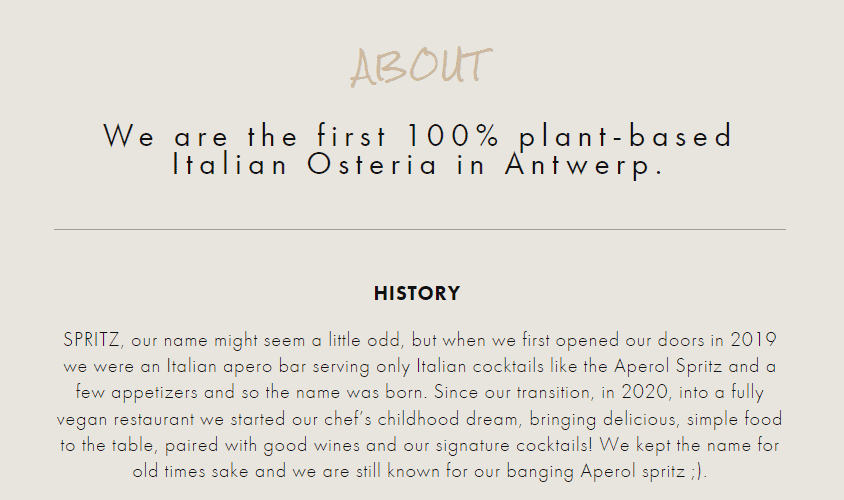
Would you like to read their story with us? 👉 Here’s how we helped them boost their bookings.
7. Use the active voice
We won’t bombard you with a grammar lesson, relax.
The active voice just means that your sentences should be directly related to the person doing them. The doer, the action-man, the performer.
💡 Example:
Your restaurant’s chef doesn’t shy away from reinventing his own recipes.
Who’s the one coming up with different recipes? 👉 Your chef. Active voice.
Why does it matter? Your copy seems livelier and more engaging.
8. Strong calls to action
As we’ve covered, guiding your customer to a certain action is the central point of copywriting. If you don’t tell them what to do, they won’t know.
Think of the beginning of this blog post. What have we been telling you? Read more!!! That’s our call to action here. In a couple of paragraphs, our call to action will be “Register your restaurant on resOS and try it for free. 30 days. No strings attached.”
If we didn’t tell you, you probably wouldn’t even notice we are a booking management company.
Calls to action vary, depending on your objective, but they’re all about what you want your customers to do, for example:
- Book a table
- Comment
- Subscribe to your newsletter
- Like a post
- Visit your website
- Follow your page
Whatever it is, tell your customers and tell them clearly.
9. Be consistent
Once you’ve chosen how you want to talk to your customers, it’s time to be consistent throughout different channels of communication. Your website, social media, newsletters and even your menu and staff should all talk to your customers in the same way.
Imagine a restaurant that is very polite on social media, and it turns out to be an informal venue. You would be attracting the wrong kind of customers online, only to let them down in-person. That’s bad business, so be consistent.
10. Don’t underestimate SEO — the technical side
If you’ve ever written a blog post or have your own website, you’ve probably heard about SEO — Search Engine Optimization.
In simple terms, SEO means writing the right words so search engines show the right article to the right people at the right time.
💡 Example:
Take a blog post on tips for using cinnamon. “Cinnamon” and “tips” are words that will naturally appear.
“Using cinnamon in drinks”,
“sweet recipes with cinnamon”
“different types of cinnamon”
are other phrases that people interested in cinnamon tips might search for. Too much “cinnamon”. Oof.
SEO means using these phrases – called keywords – to your advantage. This is just the tip of the iceberg and there’s more to SEO, but keep it in mind when writing your website’s copy and blog posts.
Try resOS for free
Now that you’ve gotten to the end of this guide, you are ready to revamp your restaurant’s copy.
While you’re at it, keep your booking management system on brand with customizable booking messages, notifications and a chat option to talk with your guests even before they meet you in-person.
You’ll connect with your customers and stand out from your competitors.
Register now for free. Your copy efforts deserve it.
